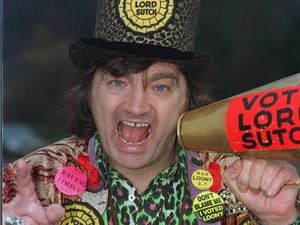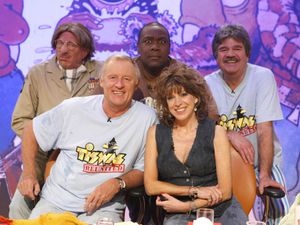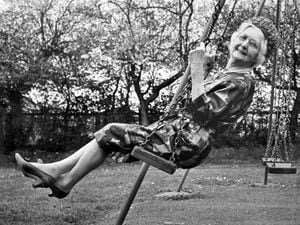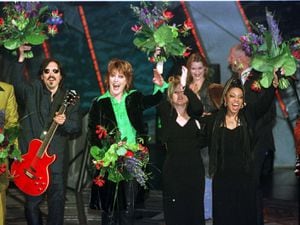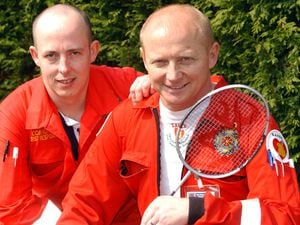Star-spangled Spitfires which flew from Shropshire
Stop smashing up our Spitfires!
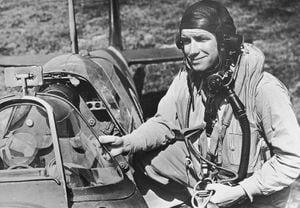
For the wartime American pilots, their introduction to the legendary British fighter and the Shropshire summer weather was a double shock which was to decimate the Spitfire fleet at their base near Shrewsbury.
It came to a head on July 14, 1942, when there was a meeting of officers during which Colonel John R. Hawkins read the riot act.
The Americans had not been at Atcham airfield long, but in the space of just 16 days, 21 aircraft had been either destroyed or badly damaged.
It was, he said, too many, and it was down to carelessness.
During that first summer after America's entry into the war, the airfield at Atcham played a key role in introducing American airmen to European conditions as they prepared for combat.
And as there were hardly any American fighters which were any good at that time, they trained on Spitfires, which instead of the RAF roundels carried the American star.
Now a new book by aviation historian Tony Holmes, called Star-Spangled Spitfires, uses stunning images to tell the story of the American units which were equipped with the famous British fighter and flew them in training and combat until the arrival of American-built fighters.
Some of the pictures were taken at RAF Atcham and RAF High Ercall.
Tony said: "These guys arrived from the States and none of them had any experience flying Spitfires. They had flown American fighters but were told that the aircraft they had in America weren't really suitable and so were sent to Atcham, and also Eglinton in Northern Ireland, to be converted to Spitfires. These were the two airfields where they did much of their training. They suffered a few incidents and accidents which killed a couple of guys.
"Once they had sufficient experience on the aircraft they went into front line units based in southern England.
"They loved the aircraft. I don't think there were any complaints about the aeroplane, considering what they were flying in America at that time. But they found it difficult to comprehend just how small the Spitfire was and it seems a lot of Americans were of bigger build anyway and found the Spitfires were a tight fight.
"And they weren't overly impressed with the lack of range. The Spitfire was built as a short range defence fighter. At that point Spitfires weren't equipped with drop tanks.
"They were marked as American aeroplanes, with the American star. Afterwards the aircraft were returned to the RAF - the aircraft were loaned by the RAF to the Americans to do their training on them.""
The Americans' 31st Pursuit Group had made a five day crossing on the Queen Elizabeth and the vanguard arrived at Atcham on June 10, 1942, with the RAF base being officially handed over to the United States Army Air Force on June 15. Two of the group's squadrons were based at RAF Atcham, and one at RAF High Ercall. Obsolete Spitfire 1s were quickly superseded by the up-to-date Spitfire Vb.
The Americans' arrival was a two-way culture shock. "Americans (most of whom are from Georgia, Louisiana and points south) complain of the cold in our flaming June. Fires are requested and as a result fires were relighted," noted the station's operations record book.
Meanwhile RAF staff got used to hearing the Spitfires described as "pursuit ships" and "telephone conversations between RAF personnel are terminated ‘You’re welcome’ or ‘You bet’ and fried toast is served with maple syrup.”
The toll of accidents quickly mounted with four aircraft of 308 Squadron being damaged or destroyed in just one day and the following day grim history was made when Lieutenant Giacomini of the 308th crashed in his Spitfire Vb on his approach to landing at Atcham, the first fatality in Europe for the US 8th Army Air Force.
The three American Spitfire squadrons comprising the 31st Pursuit Group left Shropshire in August 1942. The 307th Pursuit Squadron went from Atcham to Biggin Hill; the 308th from Atcham to Kenley; and the 309th from High Ercall to Westhampnett.
However, the American connection continued, and Atcham went on to become a major fighter base, its role being to work up American pilots on the P-47 Thunderbolt fighter in readiness for combat in Europe.
Tony is originally from Australia, but of English parents, and lives in Sevenoaks. He has written a number of aviation books, and has an aviation family background, with his grandfather being a rigger on Spitfires in the Second World War, and his father serving in the Australian air force before going into civil aviation.
Star-Spangled Spitfires is published by Pen & Sword and costs £12.
As for Atcham airfield, the central hub is today an industrial estate and there are few reminders of its aviation past, although for several hundred yards the road passing the industrial estate runs dead straight, having been built on a stretch of the old main runway.
* Pictures from the book courtesy of Pen & Sword.

